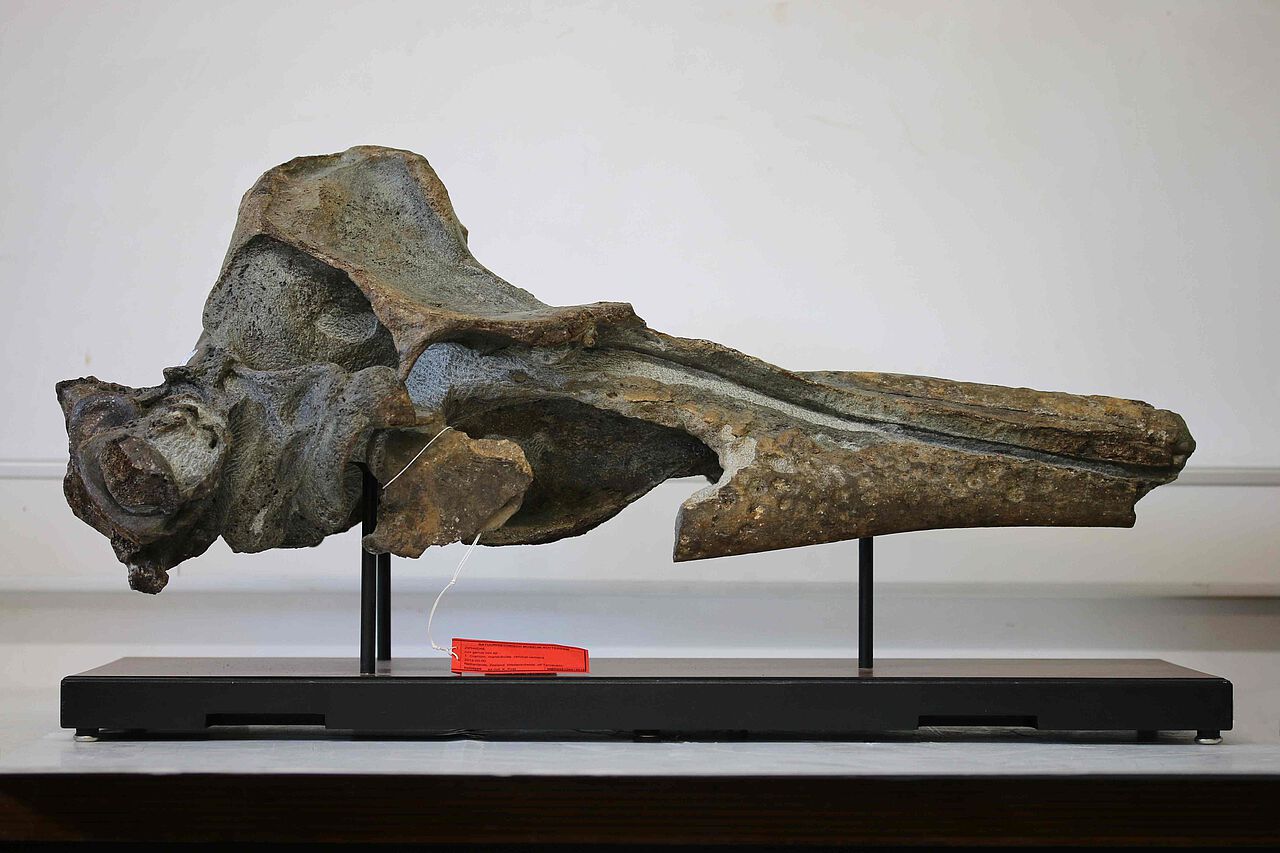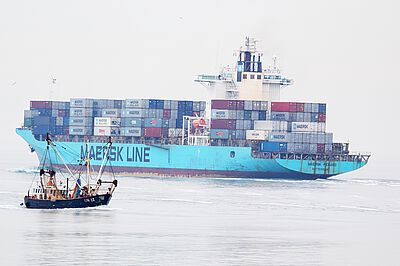Ancient whales - unique fossils from the Westerschelde
The Westerschelde estuary near the border of the Netherlands and Belgium is known for its fossil contents since the 17th century. Fossil bones are located at great depth in this busy shipping lane and are therefore very hard to collect and study. In 2014-2018, the Natural History Museum Rotterdam, working closely with local fishermen, recovered an amazing treasure of 5,000 vertebrate fossils of whales and terrestrial mammals.
The major scientific discovery of the expedition was the recognition of a small area in the Westerschelde that yielded large and heavy blocks of sandstone with unique and exquisitely preserved marine mammal fauna. The sandstone blocks contain whale skulls and vertebrae which are still more or less in correct anatomical order. Almost all of the recovered whale and dolphin species were hitherto unknown to scientists. Study of fossil single-celled organisms from the sediment has shown that the fossils are about 7.5 to 8.8 million years old.
The highlights of the exhibition are the beautifully prepared fossil skulls of beaked whales and the skull of the small but magnificent La Plata dolphin Scaldiporia vandokkumi (named after the captain who fished it). Other significant finds on display include holotypes of extinct whales Tranatocetus maregermanicum and Nehalaennia devossi, a composite fossil whale skeleton, a leatherback turtle shell, a giant sperm whale tooth and teeth of the extinct shark Otodus megalodon. A vivid painting shows a reconstruction of the ancient fauna of the Westerschelde.
The exhibition ‘Ancient whales' lasted until 14 February 2022.

One of the most important fossils: a nearly complete skull of an as yet undescribed beaked whale, that measured 4 to 5 meters in total length, fished from the Westeschelde in December 2014 (NMR 9991-12016).

